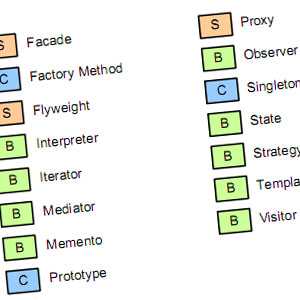
State pattern
Information drawn from null
It is a behavioural design pattern that allows an object to alter its behaviour based on changes to its internal state. The object returned by a state pattern class seems to change its class. It provides state-specific logic to a limited set of objects in which each object type represents a particular state.
We will take a simple example of a traffic light to understand this pattern. The TrafficLight class changes the object it returns based on its internal state, which is an object of Red, Yellow, or Green class.
class TrafficLight {
constructor() {
this.states = [new GreenLight(), new RedLight(), new YellowLight()];
this.current = this.states[0];
}
change() {
const totalStates = this.states.length;
let currentIndex = this.states.findIndex(light => light === this.current);
if (currentIndex + 1 < totalStates) this.current = this.states[currentIndex + 1];
else this.current = this.states[0];
}
sign() {
return this.current.sign();
}
}
class Light {
constructor(light) {
this.light = light;
}
}
class RedLight extends Light {
constructor() {
super('red');
}
sign() {
return 'STOP';
}
}
class YellowLight extends Light {
constructor() {
super('yellow');
}
sign() {
return 'STEADY';
}
}
class GreenLight extends Light {
constructor() {
super('green');
}
sign() {
return 'GO';
}
}
// usage
const trafficLight = new TrafficLight();
console.log(trafficLight.sign()); // 'GO'
trafficLight.change();
console.log(trafficLight.sign()); // 'STOP'
trafficLight.change();
console.log(trafficLight.sign()); // 'STEADY'
trafficLight.change();
console.log(trafficLight.sign()); // 'GO'
trafficLight.change();
console.log(trafficLight.sign()); // 'STOP'
------------------------------------------------------------------------
Last update on 04 Feb 2020
---